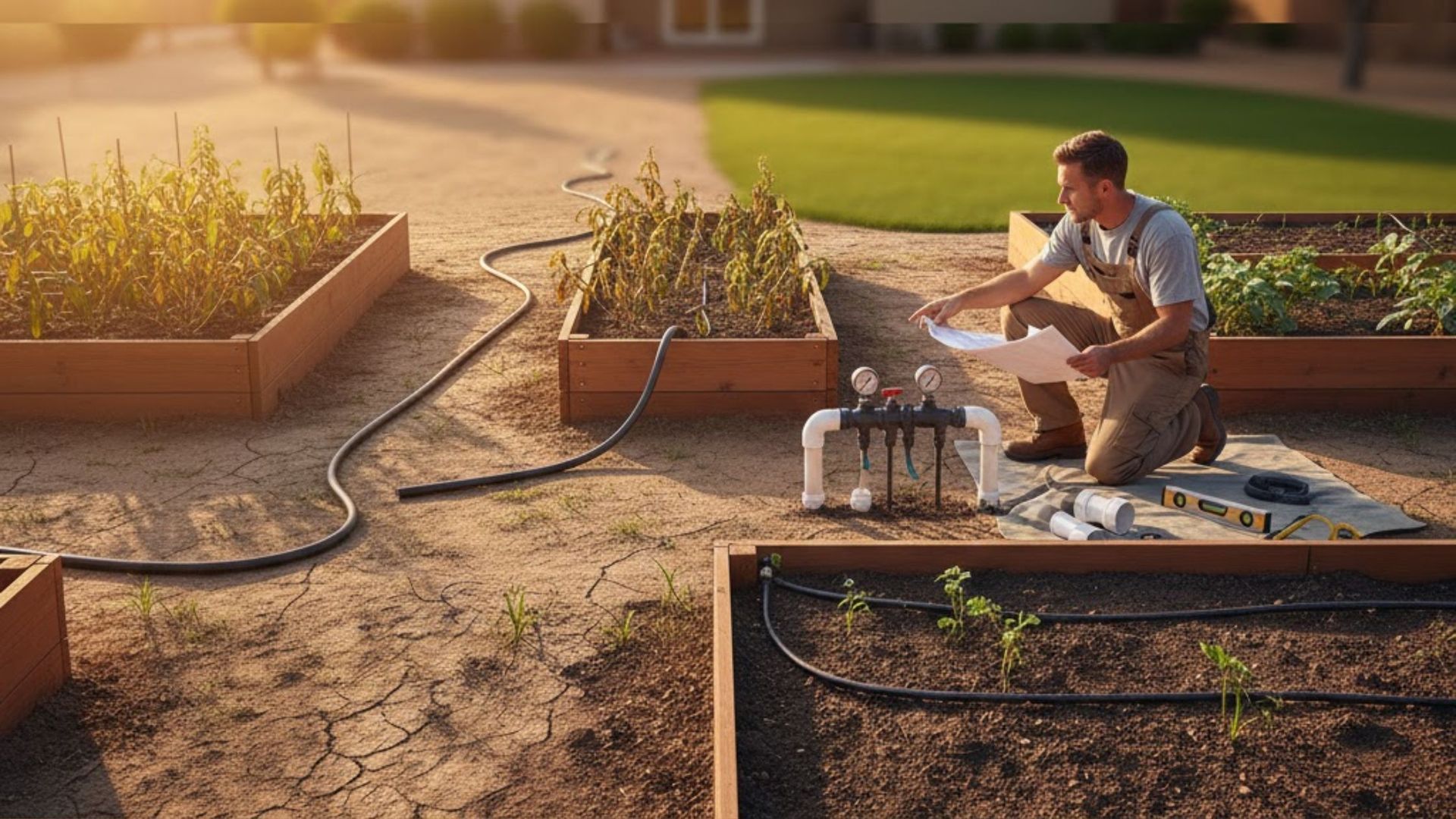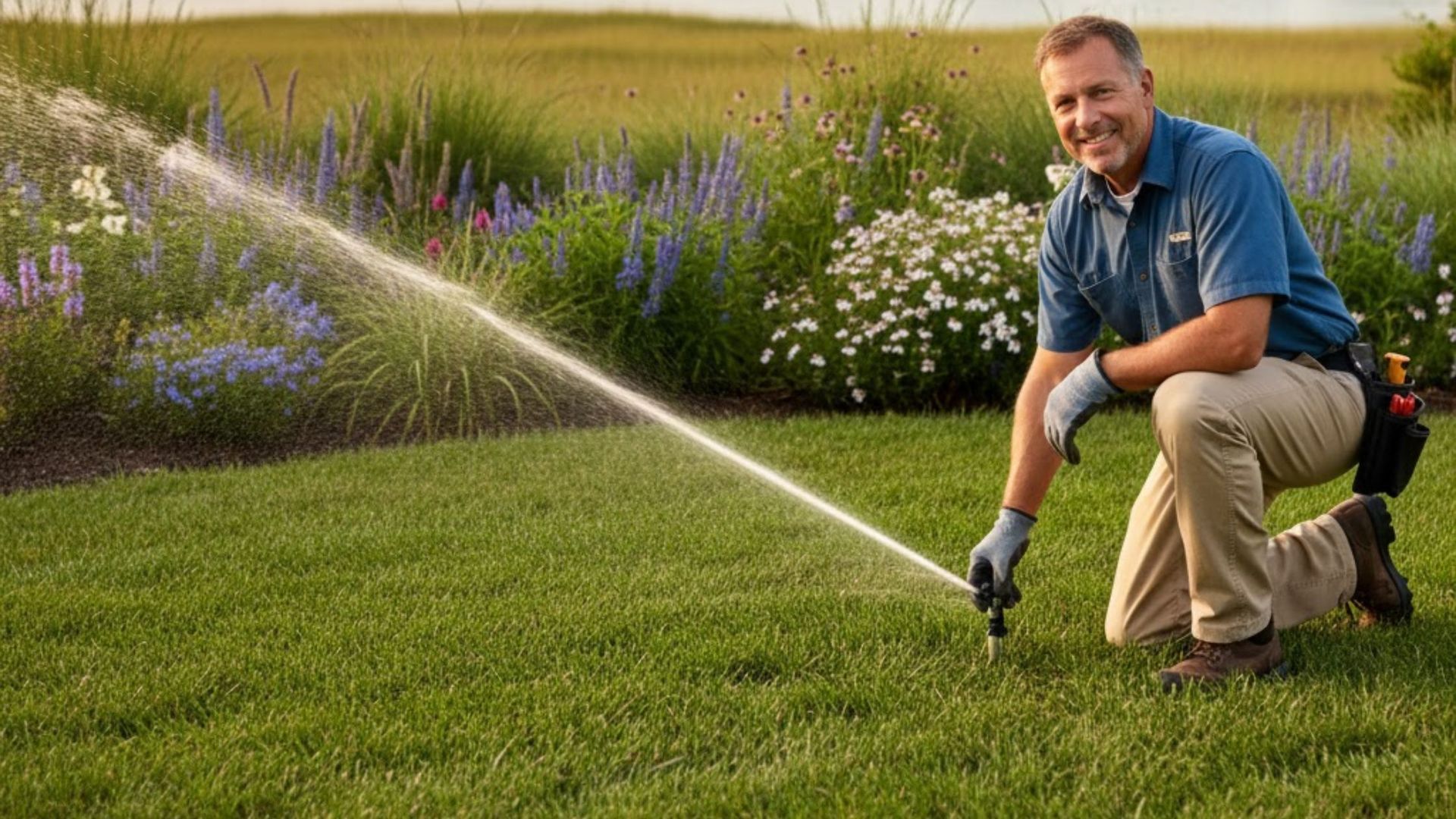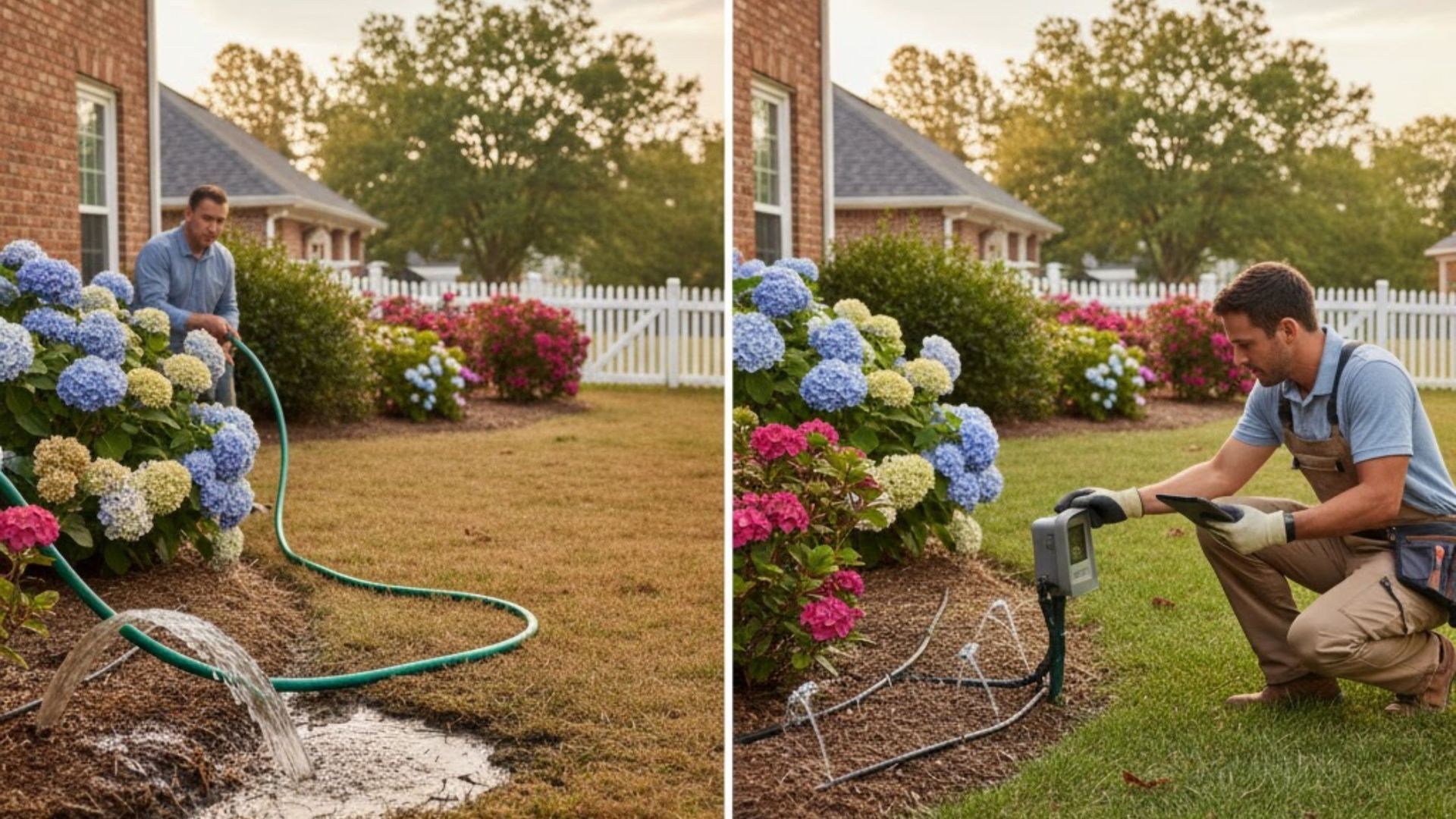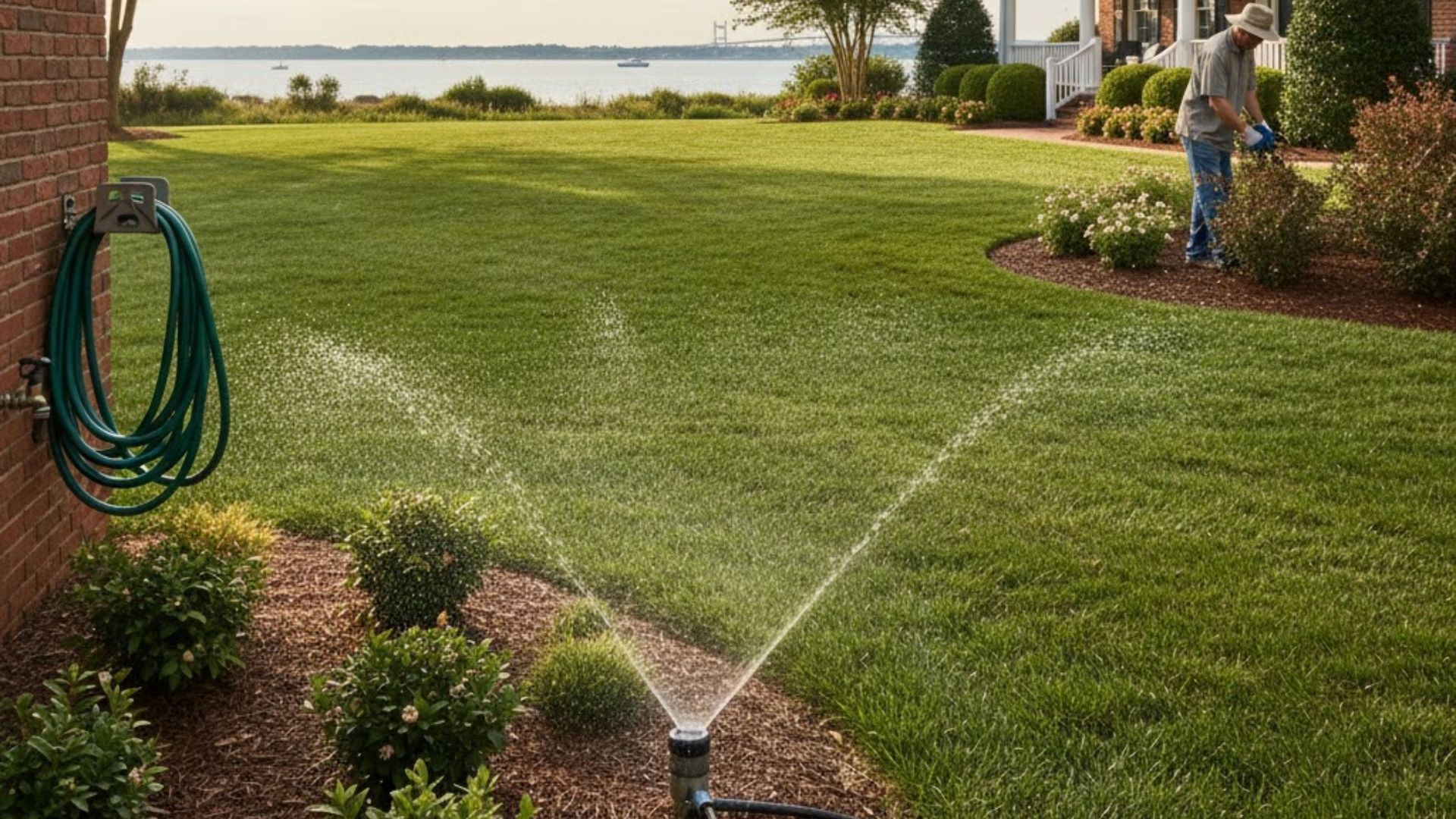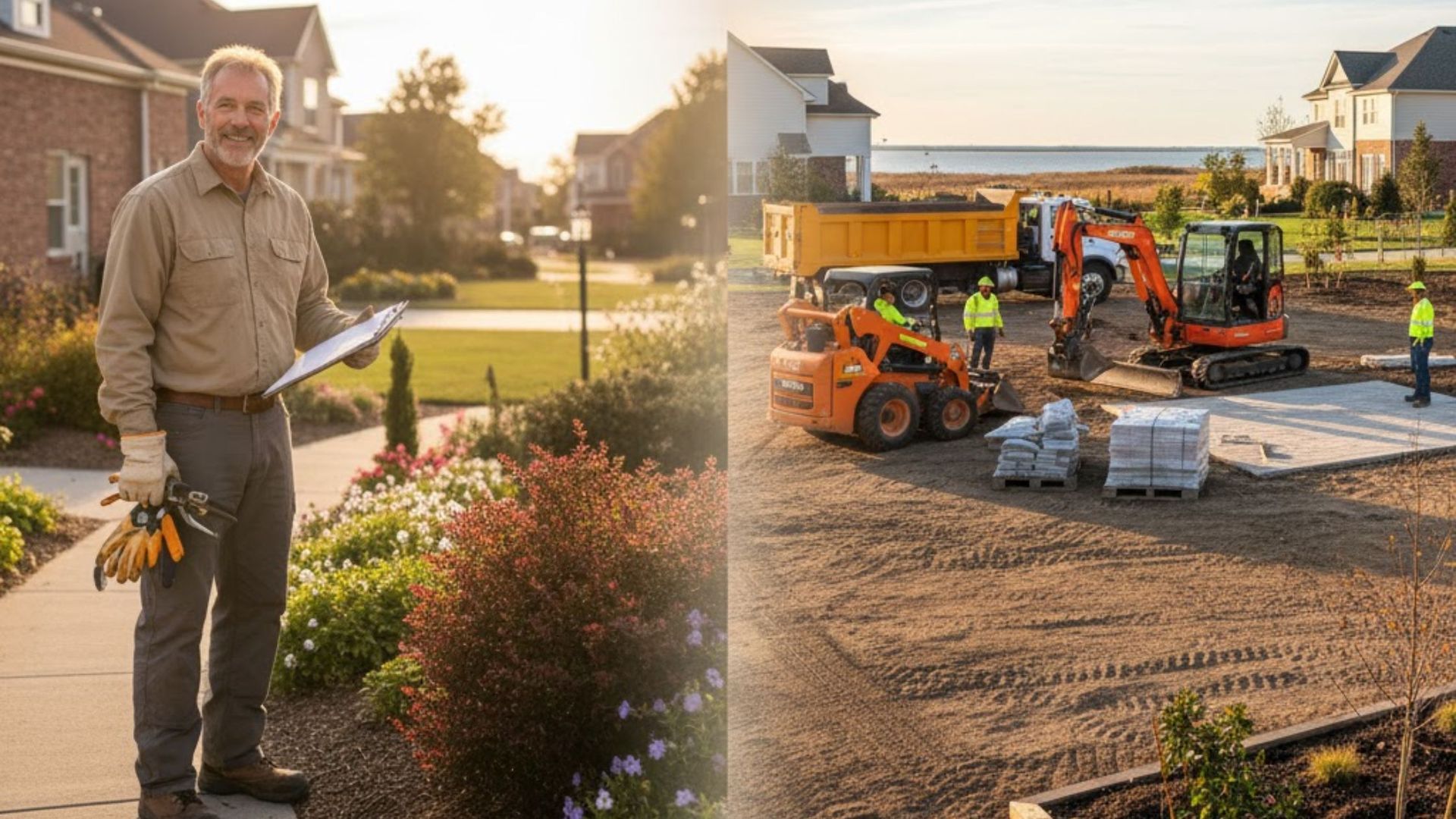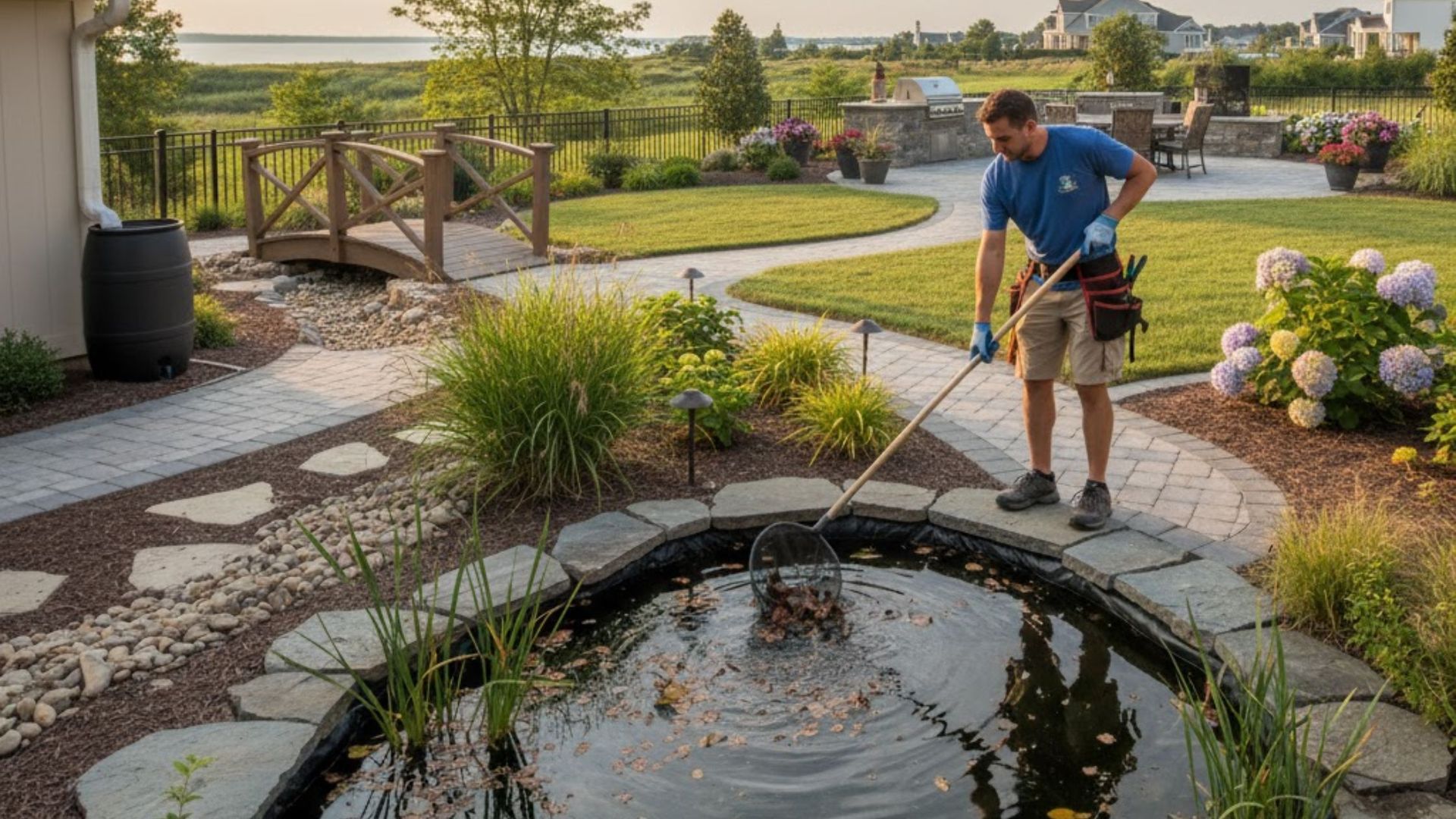What are the Signs That Your Irrigation System in Williamsburg Needs Emergency Repair?
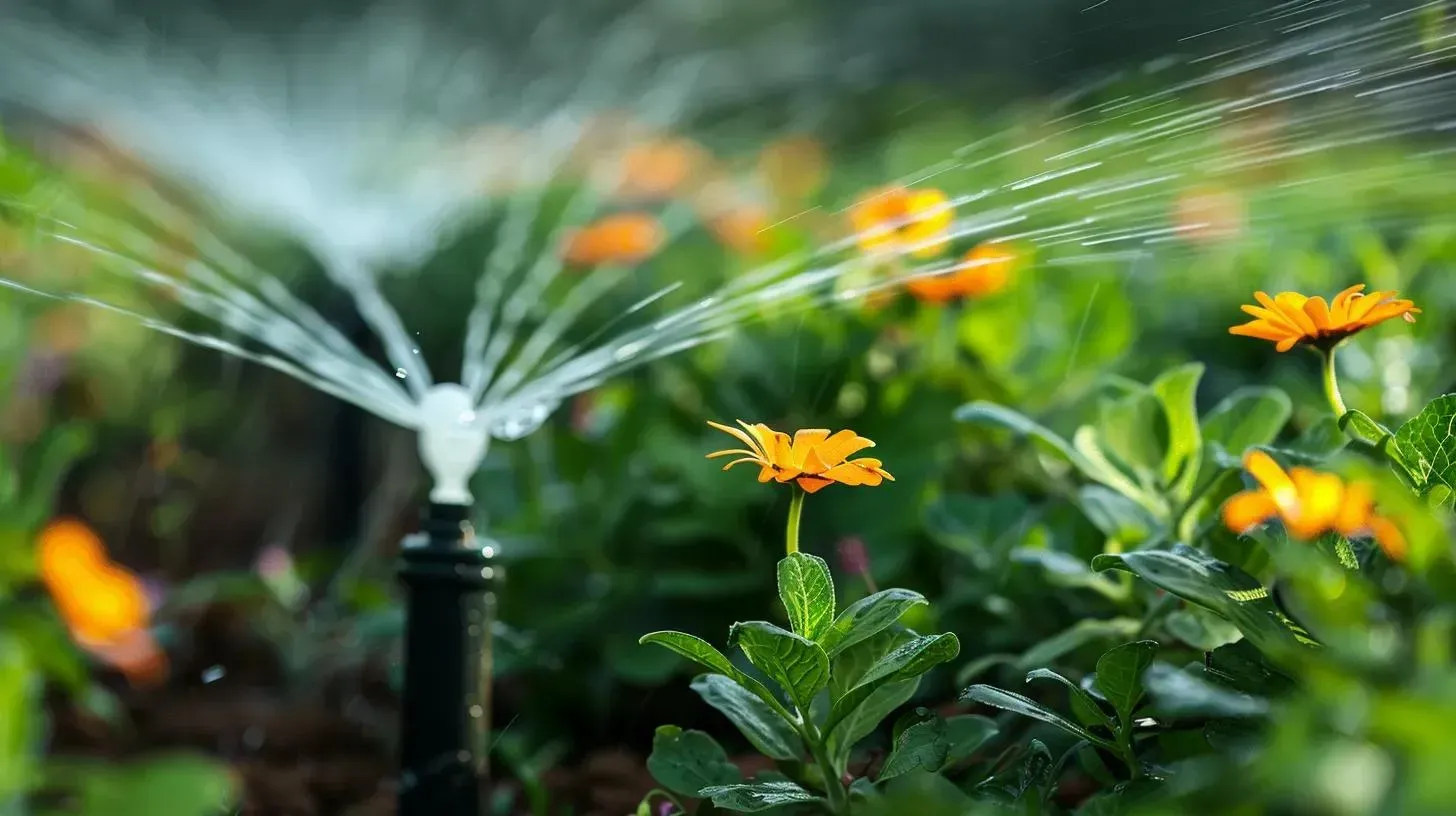
A well-maintained irrigation system is the unsung hero of a beautiful Williamsburg landscape. It quietly ensures your turf, ornamental shrubs, and flower beds receive the precise amount of water they need to thrive under the Virginia sun. However, like any complex mechanical system, components can fail, leading to critical issues that waste water, damage your lawn, and rapidly increase your monthly utility expenses. Recognizing these failures early is key to preventing minor repairs from escalating into system-wide disasters. When you need immediate professional attention, finding a reliable Irrigation Company in Williamsburg, VA is the first step toward protecting your investment. This extensive guide walks you through the definitive signs that your system is in distress and requires urgent diagnosis and repair.
What Immediate Signals Suggest My Irrigation System is Failing?
The most urgent signs of an irrigation problem are often the ones you can see or feel right away. These symptoms typically point to a significant break in the primary system components, such as a major pipe or a zone valve that has failed to close completely. Ignoring these immediate warning signs, even for a few days, can lead to exponential water loss and severe damage to your property's soil structure and foundation.
The Alarming Spike in Your Water Bill
Perhaps the most financially impactful indication of a hidden problem is a sudden, unexplainable jump in your monthly water usage statement. If your family’s indoor habits have remained consistent and yet your utility bill has skyrocketed, your underground irrigation network is the likeliest culprit. Even a hairline fracture in a single pipe or a slow drip from a faulty sprinkler head can leak hundreds, or even thousands, of gallons of water into the ground over a single week.
This significant increase is a clear distress signal, alerting you to an internal malfunction that is relentlessly wasting a precious resource. You might have an unaddressed issue with a pressure regulator that is causing over-pressurization, or a solenoid that has failed and is allowing water to flow continuously. Such financial consequences necessitate an immediate inspection to pinpoint the source of the leak and staunch the flow of wasted resources.
Visible Pooling and Saturated Areas
While a soggy patch of grass might seem harmless, excessive water pooling, especially in unexpected areas far from downspouts, is a critical sign of a deeper structural failure. This water often saturates the soil long after the scheduled watering cycle has ended, indicating a constant flow issue. This could be due to a severely leaking pipes sprinkler Williamsburg component, possibly a burst lateral line or a completely broken sprinkler head base.
Areas of perpetually wet ground can lead to dangerous conditions, including root rot for your turfgrass and fungal growth that quickly spreads through your yard. These saturated spots also pose a risk of soil erosion, washing away nutrient-rich topsoil and leaving behind unsightly mud. When you see persistent puddles, it is a clear indicator that the system's integrity has been compromised and emergency service is required.
Diagnosing the Pressure Problems That Demand Urgent Professional Help
The efficiency of any irrigation setup relies entirely on consistent and appropriate water pressure across all watering zones. Fluctuations in pressure are not just minor inconveniences; they directly compromise water distribution, leaving parts of your landscape neglected or overwatered. Detecting and addressing pressure anomalies early can prevent premature system failure and expensive component replacement.
Sudden Loss of Water Force
When you observe your sprinkler heads barely lifting, sputtering, or failing to project water the distance they normally cover, you are dealing with a significant drop in pressure. Low pressure drastically reduces the effectiveness of your watering, often leaving large sections of your lawn severely underwatered. The root cause is frequently a major breach in an underground pipe, an issue with the water main, or a severe blockage.
Alternatively, a pressure loss might signal a problem with the backflow preventer, which is a critical safety component designed to keep irrigation water separated from your home's potable water supply. A malfunctioning backflow device can impede water flow, triggering low pressure across the entire system. Understanding the state of this device is crucial for both system function and public health, and you can learn more about this by reviewing our guide to Backflow Prevention for Irrigation Systems.
The Dangers of Excessively High Pressure
While low pressure is problematic, excessively high pressure poses a risk of catastrophic damage to the entire system. When the water force is too intense, it can cause the sprinkler heads to mist excessively, leading to significant water evaporation before it even reaches the root zone. More critically, high pressure strains the seals, fittings, and rigid PVC piping.
This stress can lead to the rapid failure of components, including the premature cracking of sprinkler heads or the bursting of underground lines. A control valve or pressure regulating valve (PRV) is intended to manage this flow, but if it malfunctions, the system is exposed to damaging forces. Timely adjustment or replacement of these components is vital for extending the lifespan of your irrigation equipment.
Uneven Water Distribution and Lawn Stress: Classic Indicators of a Problem
A patchy, inconsistent lawn is a sure sign that your irrigation system is not distributing water effectively or uniformly. The visual contrast between lush green spots and dry, struggling areas provides a clear diagnosis of malfunctioning components that require immediate attention. These visual disparities are classic uneven lawn watering signs that should not be ignored.
Patches of Brown Turf and Wilting Plants
If large sections of your lawn begin to turn dull brown or yellow, yet other areas remain vibrant, the issue is almost certainly related to insufficient water reaching the stressed zones. This often occurs when sprinkler heads are completely blocked by debris, or when a segment of the underground piping has been damaged, starving the furthest sprinkler heads in the zone. Addressing this quickly is vital.
Similarly, wilting ornamental plants or shrubs in a particular bed may point to a clogged or broken drip emitter line dedicated to that zone. When plants are consistently deprived of the moisture needed for transpiration and photosynthesis, they enter a state of stress that makes them highly susceptible to disease and pest infestation. Immediate corrective measures are required to restore their vitality and prevent permanent loss.
Misdirected Spray Patterns and Coverage Gaps
An efficient system delivers water precisely where it is needed—to the plant material—and nowhere else. However, a misaligned or damaged nozzle on a sprinkler head can result in the water spraying onto a sidewalk, driveway, or the side of your house. This wasted water not only leads to significant runoff but also creates large, dry gaps in your lawn coverage.
The most common causes are physical damage, such as a head being struck by a lawnmower, or a slight shift in the head's positioning due to changing soil conditions. Regular inspections are recommended, but if you notice water hitting hardscaping or pooling in an area that should be receiving deep watering, it’s a sign that the head needs immediate adjustment or replacement. We often find that this is where small problems start before they escalate.
Dealing with inconsistent watering throughout the seasons can be a constant battle. To ensure your entire landscape receives the right amount of hydration as the weather shifts, it’s beneficial to review comprehensive seasonal guides that cover preventative care. A proactive approach can mitigate many of these issues, and we recommend consulting our detailed Williamsburg Guide to Seasonal Irrigation System Care for a schedule of best practices.
Identifying Signs of Leaking Pipes Sprinkler Williamsburg and Valve Failure
The control valves are the unseen mechanical regulators of your irrigation system, governing the flow of water to each specific zone. When these critical components fail or when the leaking pipes sprinkler Williamsburg network suffers a major break, the damage is both instant and ongoing. These internal failures represent some of the most common reasons homeowners require emergency repair services.
When faced with these serious system failures, homeowners need responsive and knowledgeable support. We, at Hampton Roads Irrigation & Landscape, understand the local soil composition and climate challenges that impact underground systems in the area. Our prompt service is designed to diagnose and repair high-priority problems quickly, restoring system efficiency and protecting your valuable landscape. The expertise required for accurate valve and piping repair makes working with a licensed Irrigation Company in Williamsburg, VA essential for a long-lasting fix.
Constant Dripping from Control Valves
A healthy zone valve should be completely watertight when it is powered off and the zone is not actively running. If you find water constantly trickling, dripping, or actively flowing from sprinkler heads within a de-activated zone, it is a definitive indication of a faulty zone valve. This is one of the most classic broken valve indicators that professionals look for.
A failure of this type often means the internal diaphragm or seal within the valve is either damaged or obstructed by debris, preventing it from creating a complete seal. This continuous, low-level flow of water saturates the zone unnecessarily, leading to overwatering and creating muddy spots near the valve box itself. Replacing the valve's internal components or the entire assembly is usually necessary to resolve this chronic issue.
Mysterious Wet Spots along Underground Lines
Underground leaks can be the trickiest to detect because they do not always manifest as surface puddles immediately. Instead, look for areas of your lawn that are noticeably lusher, spongier, or have a deeper green color than the surrounding turf, especially if the ground feels permanently damp. This usually signals a breach in the main line or a lateral pipe that is slowly releasing water beneath the surface.
These leaks can often be the result of excavation, shifting ground, or tree roots that have grown into the piping over time. Without professional leak detection equipment, finding the exact source can be challenging. An ongoing underground leak not only wastes water but can eventually destabilize pavement, undermine retaining walls, and cause damage to surrounding property structures.
To truly understand the comprehensive scope of potential repair issues and the costs associated with them, it helps to be informed. For a detailed breakdown of expected maintenance expenses and potential repair budgets for issues like these, consult our dedicated Williamsburg Homeowners’ Guide to Irrigation Costs.
Controller, Electrical, and Mechanical Failures
The brain of your irrigation system is the controller, and its proper function is crucial for automation and water conservation. When electrical signals or mechanical timing mechanisms fail, the entire system can become unpredictable, leading to critical watering errors that can only be fixed by a professional technician.
System Won't Turn On or Off
If your controller fails to initiate a programmed cycle, or if the system runs continuously and ignores the scheduled shut-off time, you have an urgent electrical or control board issue. A system that won't turn on leaves your landscape to dry out, while one that refuses to shut off can lead to catastrophic flooding and utility bills. Often, a simple blown fuse or a tripped circuit breaker can be the cause, but sometimes the complexity lies deeper.
Faulty wiring, especially between the controller and the solenoid valves out in the yard, can interrupt the low-voltage signal needed to open and close the valves. If the controller display itself is blank or flashing error codes, it needs immediate professional diagnosis. In some cases, a complete controller replacement with a modern, smart system might be the most cost-effective long-term solution.
Strange and Unfamiliar Noises
A functioning irrigation system should operate with predictable, relatively quiet sounds, typically a gentle rush of water and the quiet activation of the sprinkler heads. If you suddenly hear loud banging, hammering, high-pitched whistling, or a pronounced sputtering sound, the system is under significant distress. These sounds indicate severe turbulence, air pockets, or mechanical impact within the pipes.
- Water Hammer: A loud bang or shuddering noise, often heard when a zone quickly shuts off, suggests high pressure combined with a broken component that absorbs the hydraulic shock.
- Whistling/Hissing: A continuous hissing or whistling sound, even when the zone is off, points to a persistent leak in a pipe or a constantly weeping valve.
- Sputtering/Gurgling: These sounds from the sprinkler heads usually indicate that air is trapped in the lines, often drawn in through a compromised suction line or a leak located upstream of the head.
These noises signal internal stresses that threaten the integrity of the piping and connections. Addressing these acoustic warnings quickly can prevent a small rupture from becoming a major pipe burst. To ensure long-term stability and optimal function, you can always reach out to the team at Hampton Roads Irrigation & Landscape for a thorough system check.
Understanding the Secondary Damage and Property Risks
The most immediate danger of a faulty irrigation system is the damage it inflicts on your lawn. However, the true long-term costs often stem from the secondary damage that excess water can cause to the physical structures and environment of your property. These issues extend far beyond simple brown spots on the grass.
Soil Erosion and Landscape Degradation
When sprinkler heads are broken or if there is a severe pipe leak, water is often discharged far too forcefully or in volumes too large for the ground to absorb. This leads to surface runoff and significant soil displacement. Over time, this constant washing away of topsoil degrades the quality of your planting beds and lawn area. This makes it challenging for grass and plants to establish strong root systems.
This issue is particularly pronounced on sloped areas or near garden beds, where the moving water can strip away mulch and expose sensitive roots. The resulting landscape degradation requires extensive work, not just to repair the irrigation system, but also to re-establish healthy soil and proper grading. This highlights why effective irrigation management is intimately connected with the health of your overall Benefits of Pairing Irrigation Repair with Landscape Design efforts.
Foundation and Hardscape Runoff Issues
One of the most expensive and time-consuming problems associated with unchecked irrigation leaks is damage to a home’s foundation. Water pooling constantly near the perimeter of your house can oversaturate the underlying soil, leading to hydrostatic pressure and foundation movement over time. This serious structural threat requires immediate remediation.
Similarly, consistent runoff onto patios, driveways, and walkways not only creates a slippery hazard but can also lead to mineral deposits and staining on the hardscaping. Over time, the constant water flow can undermine the sub-base of paved areas, causing cracks and shifting. If you notice persistent water flow onto hard surfaces, it is essential to act quickly to realign or repair the source.
Proactive Strategies to Mitigate Emergency Scenarios
While emergencies happen, many severe failures can be prevented through routine attention and smart technology integration. Homeowners in the region have powerful tools at their disposal to monitor their system's health and conserve water efficiently. Prevention is always less costly than emergency repair.
Regularly performing detailed checks of your irrigation system, especially after seasonal weather changes, can catch small issues before they become critical. These self-inspections should include looking for small drips at sprinkler heads, verifying that all zones are turning on and off correctly, and manually testing each zone for proper coverage and pressure.
One of the most effective ways to avoid emergency situations is to have a professional conduct a thorough check-up at least twice a year. This allows experts to identify subtle broken valve indicators or minor subterranean leaks that the average homeowner might miss. Professional services ensure that solenoids, filters, and all mechanical components are functioning optimally, thereby extending the system's longevity.
Integrating modern smart technology into your existing irrigation controller provides real-time monitoring and advanced water management capabilities. Smart controllers, when paired with weather sensors, can prevent watering during a rain event or skip cycles if the soil is already saturated. This dramatically reduces unnecessary run-time and prevents the overwatering that often leads to soil erosion and wasted resources.
Furthermore, leveraging specific add-ons can offer dramatic savings and prevent system overuse. For example, installing the right components can go a long way in Reducing Utility Bills with Rain Sensors. These systems are designed to automatically interrupt the programmed watering cycle when they detect a certain amount of rainfall, ensuring that your system only runs when your landscape truly needs hydration. This prevents wasteful operation and protects your lawn from waterlogging.
Many smaller problems, like minor clogs in nozzles or simple head adjustments, can be handled by an educated homeowner. Knowing the proper steps for inspecting and tuning your system mid-season can greatly improve water conservation and plant health. To assist with these routine checks, we encourage you to utilize our comprehensive Williamsburg Guide to Mid-Season Irrigation Maintenance as a reference tool.
For a completely hassle-free approach to managing your system, enlisting an expert for comprehensive care ensures your system runs perfectly year-round. An experienced provider, such as the specialists at Hampton Roads Irrigation & Landscape, offers tailored maintenance plans designed to address the specific needs of the local climate and landscape.
When you invest in professional maintenance, you are investing in peace of mind. A service plan covers everything from winterization and spring start-up to backflow testing and mid-season tune-ups, ensuring every component from the controller to the furthest emitter is working efficiently. This proactive engagement significantly reduces the likelihood of disruptive and expensive emergency repairs.
To ensure your landscape thrives and your water bills remain manageable, having your system professionally serviced is indispensable. We welcome you to look at our reviews to see how we’ve helped countless local homeowners maintain lush, healthy yards through reliable irrigation service. Our goal is to make sure your irrigation system works perfectly, conserving water while keeping your Williamsburg property beautiful.
If you suspect you have an underground issue or require a professional system check, do not hesitate to contact us. We are ready to deploy our expertise to diagnose and resolve your irrigation issues swiftly and effectively.
.Frequently Asked Questions (FAQs)
Q: How can I tell if a single zone valve is stuck open?
A stuck-open zone valve is often indicated by water constantly flowing or weeping from the sprinkler heads in that specific zone, even when the controller is set to "off." You may also notice that the ground in that zone is perpetually saturated, or you might hear a continuous, low-volume hiss near the valve box.
Q: Is low water pressure always a sign of a leak?
While a leak is the most common cause of low pressure, it is not the only one. Low pressure can also be caused by a clog in the main line, a faulty pressure reducing valve (PRV), or debris blocking the backflow device. It requires a professional to test the pressure at various points to accurately determine the source of the drop.
Q: Why are my sprinkler heads not popping up?
The most frequent reasons for heads not popping up include low system pressure, a physical blockage (like turf or soil) around the head, or a component failure such as a broken riser or a damaged seal inside the head itself. Sometimes, running a full cycle can help a sticky head, but if the issue persists, the head needs to be inspected or replaced.
Q: Can a broken sprinkler system damage my foundation?
Yes, absolutely. A severe leak or a constantly running zone near your home’s foundation can lead to soil oversaturation. Over time, this saturation can exert hydrostatic pressure on the foundation walls or cause the soil to swell and shift, leading to structural damage that can be extremely costly to remediate. This is why emergency repair is so important.
Q: When should I call a professional, versus fixing it myself?
You should call a professional, like an expert from Hampton Roads Irrigation & Landscape, immediately if the problem involves the main water line, any electrical issues beyond resetting a circuit breaker, or if you cannot identify the source of a large underground leak. Simple fixes like clearing a minor nozzle clog or slightly adjusting a misaligned head can often be handled by the homeowner.
The Importance of Prompt Action for Your Landscape
Addressing irrigation system distress signals immediately is the most responsible action you can take as a homeowner. Every hour a pipe leaks or a valve fails to close is an hour of wasted water, increased utility costs, and potential damage to your home’s vital structures. Whether the issue is simple broken valve indicators or a complex electrical fault, timely intervention preserves your landscape investment.
When your system sends out these emergency warning signs, the fastest way to stabilize the situation is by trusting proven professionals. The experts at Hampton Roads Irrigation & Landscape are committed to providing rapid, reliable service to the community. We use diagnostic tools and industry knowledge to efficiently locate and repair critical failures, ensuring your system is quickly returned to optimal, water-saving performance. Contact us today to ensure your beautiful Williamsburg lawn remains healthy and efficiently irrigated. Finding the right Irrigation Company in Williamsburg, VA means partnering with a team that values your property as much as you do.
